Do you love splitting firewood? The heft of the handle in your hand, the satisfying thwack as the wood gives under your maul, the pile of fresh pieces slowly growing—chopping wood can be a very satisfying experience. I’ll admit that I never greatly enjoyed cutting firewood in the woods. Running a crosscut saw is pleasant work, but it is slow. And chainsaws, while interesting, are not really my thing. But I grew to like splitting wood. It’s slow work, it’s hard on the back, but it isn’t too loud for thought or too complicated for anyone to learn.
Most of what I know about splitting comes from experience and from my father’s advice. In this post, I’ll share a few thoughts on making your splitting experience better. If you are a firewood expert, no doubt you can correct me if I give bad advice.
If splitting wood looks daunting, consider these four tips:
1. Choose an appropriate maul
As a boy, I saw a lot of my friends splitting large logs with a maul like this:
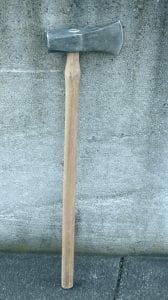
“Maul” by Shakespeare is licensed under CC BY-SA 3.0
But my father only used this kind:

“Monster Maul” by SayCheeeeeese is in the Public Domain, CC0
The Monster Mauls were ugly, and they were heavy, but they had splitting power. Their triangular head prevented their getting stuck in pieces of knotty wood.
More recently, the trend has been to use the lighter-but-still-powerful Fiskars Splitting axes:
If you do choose a Fiskars, you probably want one of the longer ones (pictured above). The 23.5″ handles quickly limit your swing, unless you are short.
All of the mauls above are intended to chop serious firewood. What if, like many people, you need to splinter kindling by the fireside? The Snow and Nealley mini-maul could be a great tool for you.
The mini-maul is small enough you can use it with one hand (for a while) but still packs enough punch to break through some gnarled hardwood. Even if you split firewood professionally, you might use a mini-maul to finish off those pieces your splitter mangled but didn’t quite separate. Like all Snow and Nealley tools, it’s entirely US-made.
2. Start with the right foundation.
If you’ve split much wood at all, you’ve realized that what’s under your piece of wood is almost as important as the maul you’re swinging over it.
Place the wood on something solid. Spongy, snowy, or angled ground will let your firewood slip away from the impact of the maul. You might see it bouncing as it returns the energy of the blow without splitting.
Perhaps it has dawned on you, as it did on me, that the best kind of base is rock or concrete. However, unless your aim is perfectly true all the time, this is a poor idea. I’ve dulled a few mauls by slamming them into rocks inadvertently.
The best base is a second piece of wood. Pick the largest, mostly evenly sawed block you see in your pile, and set it up on level ground. Maximize your impact.
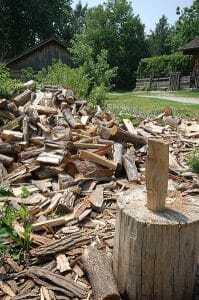
“Firewood on the block” by johnantoni is licensed under CC BY-SA 2.0
3. Don’t cross the log.
How do you approach a tough, knotty piece of maple? Lots of people beginning by trying to split the chunk in two—right through the middle. Like this:
That approach worked well for the above log, and it will work well for lots of pieces that aren’t full of knots and twisted grain. For difficult pieces, though, my father taught me to attack the log differently:
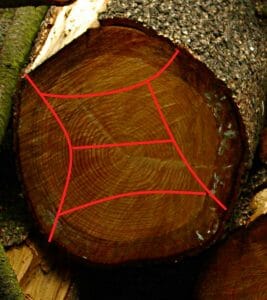
Illustration licensed under CC BY-SA 3.0 / A derivative from the original work
You can often make better progress by peeling chunks off the edges, and finally splitting what’s left of the log in the center. Obviously, that depends on where the worst knots are.
4. Don’t try to do the maul’s work for it.
Mauls are heavy for a reason: the falling weight creates force, so you don’t have to.
Some folks swing monster mauls like kindling hatchets, raising the tool in the air and muscling it down on the wood with all their might. If you do this, you are working too hard. The effort you’re putting into your swing is wearing you out (and maybe, distracting you from swinging accurately).
My father encouraged me to lift the maul high, then guide it’s descent. A well-aimed blow is better than a glancing hit, even if that strike was done with great velocity. Of course, you do need to work to bring the maul down hard—but bear in mind the power of the tool and try to be conscious of whether you are working efficiently. At the end of the day, your back will be the better for it.
If you can choose the right maul, set up a proper splitting block, split around the edges instead of across the center, and use your own power wisely, you’ll be in a good position to tackle a tough pile of firewood.
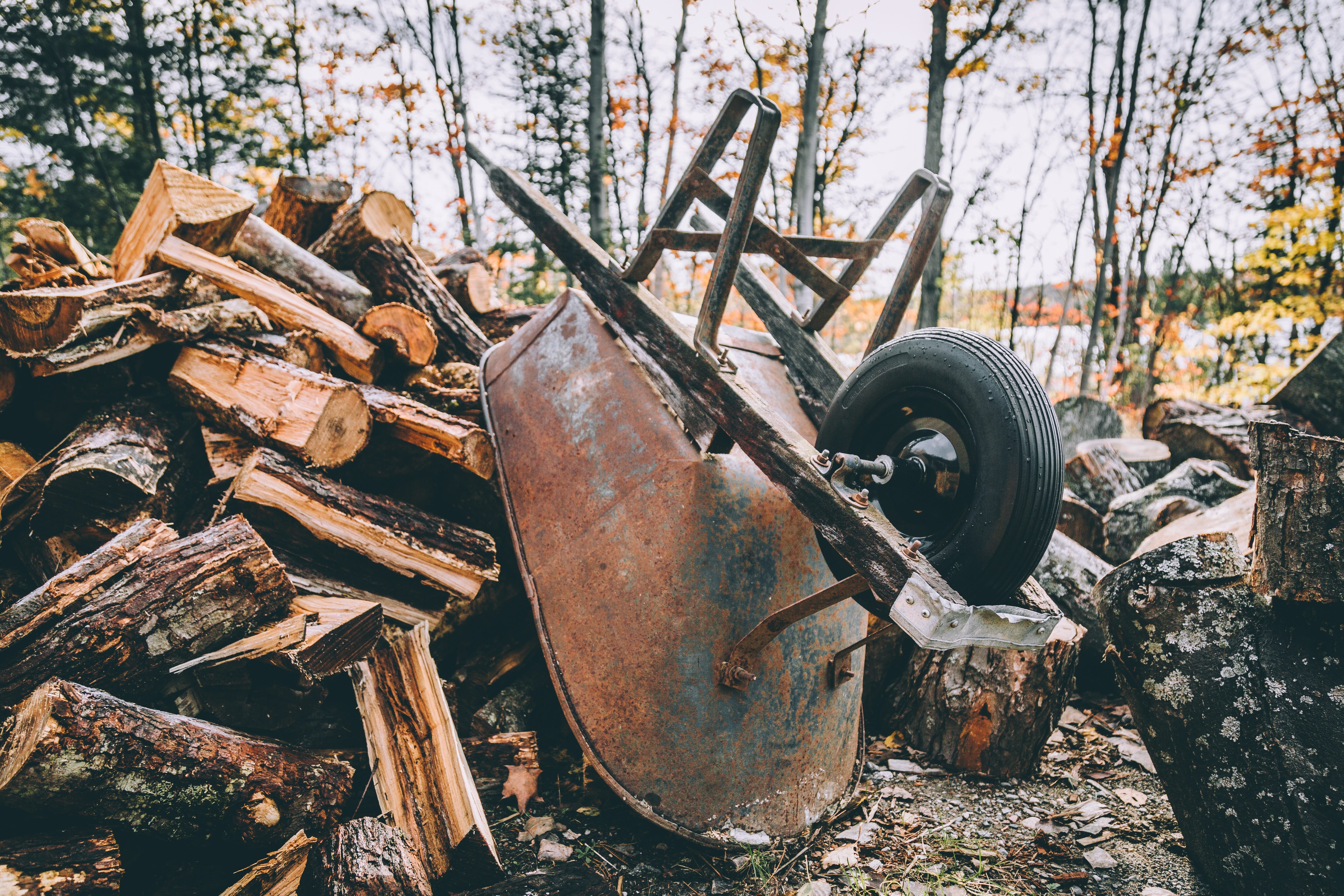

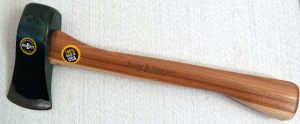
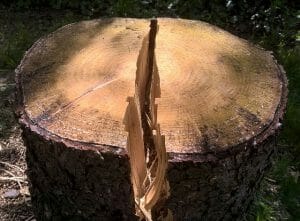
Posts I’m interested in! Thanks for the author